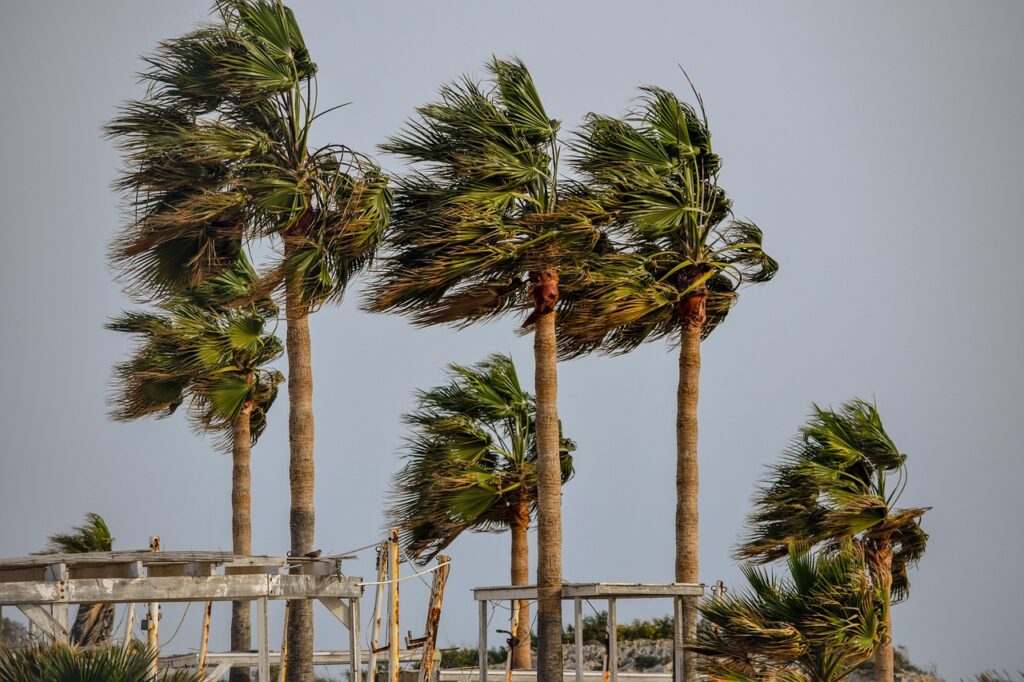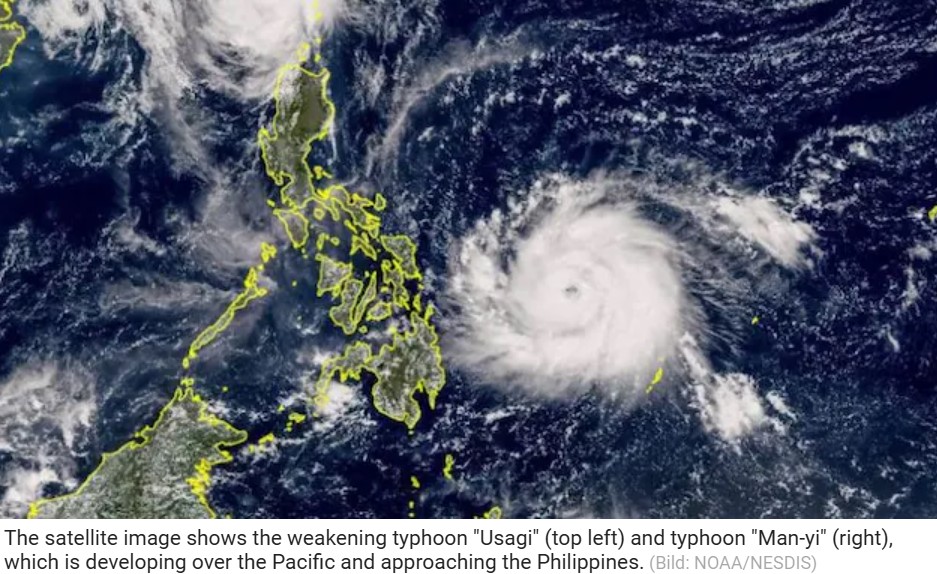Following the heavy rainfall in western Germany, the number of dead is rising. In addition, numerous people are still missing. The situation remains unclear in many places.
At least 59 people have died after storms in western Germany. In Rheinland-Pfalz, 28 people lost their lives as a result of the flood disaster. Possible further victims are to be feared in view of the large number of around 40 to 60 people still missing, Rheinland-Pfalz Interior Minister Roger Lewentz made clear on SWR television. Among the fatalities are also residents of a facility for disabled people. The floods came faster than people could have been brought to safety, the Interior Ministry explains.
In North Rhine-Westphalia, the situation also remains tense. After the heavy rain subsided, firefighters and other emergency services in many places are struggling with a worsening flood situation. At least 31 people have died, according to the NRW Ministry of the Interior. Fifty-seven people were also injured, it said. Cologne police reported 20 deaths in the region. Not all of the bodies sighted have yet been recovered, it announced Thursday afternoon.
At the Steinbach dam in the district of Euskirchen, which is threatened by a dam break, the water level is dropping. This was announced by Markus Böhm of the crisis management team. On the one hand, the inflow has decreased, said the managing director of the energy service provider E-Regio. On the other hand, the technical relief organization pumped water from the dam close to the border between North Rhine-Westphalia and Rheinland-Pfalz . On Friday morning, there is to be a new survey of the dam. Because the drain of the dam is blocked as a result of the storm, the water cannot be released in a controlled manner. Previously, the Rhine-Sieg district had announced on Facebook: “According to current estimates, a sudden failure of the wall of the Steinbach dam must be expected at any time.” The evacuations of the affected localities of Swisttal and Rheinbach continue. “Do not return to your houses and apartments under any circumstances,” warns the district administration.
The Bad Neuenahr-Ahrweiler area was hit particularly hard by the storm disaster. Mission forces of the Malteser Hilfsdienst from the southwest support the rescue forces. There, 1300 people are missing. This was announced by the district administration. A spokeswoman explained that the mobile network was paralyzed – and therefore there was no cell phone reception and many people could not be reached. “We hope that will clear up,” she said of the high number. As of Thursday evening, a total of 28 deaths had been counted. But the county said there were more fatalities. The spokeswoman did not want to give figures on this yet.
The Rur dam is now overflowing. According to the Eifel-Rur water board, the dam is now overflowing “with a low dynamic”. The inflows to the dams had “reduced pleasingly” in the past hours. According to the association, the Urft reservoir, which is upstream of the Rur reservoir, had already overflowed earlier. As a result, the latter filled more quickly.
In Wangen im Allgäu in the Ravensburg district, a residential area was flooded. According to the Ravensburg Police Headquarters, initially two bridge flows of the Epplingser Bach were blocked by flotsam. As a result, the bank had overflowed and flooded the adjacent residential area Epplingser Halde.
The crisis management team in the Rhine-Erft district in North Rhine-Westphalia has declared a disaster situation. Due to the flood situation along the Erft River, there is a danger that the previously localized situation could spread to Kerpen, Bergheim and Bedburg in addition to Erftstadt, according to a press release. The municipalities belonging to the district were asked to “prepare and implement the necessary measures of civil protection, such as evacuations and accommodations in particular.” “We are currently experiencing a crisis whose dimensions cannot be estimated today,” says District Administrator Frank Rock.
In Wuppertal, too, heavy rains caused the Wupper River to rise, resulting in flooded streets. According to a police spokesman, some roads on the valley axis along the Wupper were closed. Residents were accordingly asked not to stay in basements, but to move to higher apartments.
In Hückeswagen in the Oberberg district, the Bevertalsperre overflowed due to the heavy rainfall. However, the situation does not seem to be quite as tense as it was during the night. “The dam, which was threatening to burst, is safe so far,” said a police spokesman in the morning. In the area around the dam, however, there is extensive flooding, he said. About 1500 people had to leave their homes in Hückeswagen. “In the evacuation measures, a lot has to be done by boat, because the roads are no longer passable,” the police spokesman said. Meanwhile, at the Wuppertalsperre in the Bergisches Land region, the water continues to be drained, he added. There, an uncontrolled overflow had been feared.
The fire department rescued three people from the river Wurm, who had threatened to drown there. According to the Heinsberg district police authority, two men and a woman were on a boat near Übach-Palenberg (Heinsberg district) on the Wurm, according to initial findings.
In Leverkusen, a hospital is evacuated due to a disruption in the power supply. The operation could last until Friday, because rescue services are only available to a limited extent, says a spokeswoman for the Leverkusen hospital. The evacuation affects 468 patients, she said. Depending on their state of health, they were also discharged, she said. Operations, appointments and procedures were canceled. “Some of the medical equipment in the intensive care units had to run on batteries,” the hospital said. Already during the night, 12 children and 15 adult patients had been transferred to surrounding hospitals, it said. Overall, the power supply, which was actually secured several times, was unstable. Trigger was the high water of the small river Dhünn. This caused a short circuit at two transformers.
Caravan simply crushed in flash flood
In Solingen, according to police, an 82-year-old man fell and got his head under water. The pensioner later died in hospital. In the Unna district, a 77-year-old man also died in the submerged basement of his home. In the case of the dead woman discovered in Rheinbach near Bonn, the police are now investigating further, but suspect a connection with the storm.
In the Märkischer Kreis two firefighters were already killed on Wednesday. A 46-year-old firefighter was swept away by the water masses and drowned. Only two hours later, a 52-year-old firefighter collapsed during an operation in the area of the Werdohl-Elverlingsen power plant. He died despite resuscitation and aid measures, the police said.
The Ruhr River is experiencing record high water levels in many places. For example, at Hattingen, with 1450 cubic meters of water per second, about 20 times as much water flowed through as the long-term average, said a spokesman for the Ruhr Association. There hasn’t been a flood like this since at least 1960, he said. “We have water levels on the Ruhr that are a meter higher than what has occurred so far,” Ulrich Windau of the flood warning service of the Arnsberg district government also says. For example, the water level at Wetter reached a new high of 7.21 meters, and never-before-recorded flood levels were also measured at Hattingen.
Houses still at risk of collapse
According to Rheinland-Pfalz Interior Minister Roger Lewentz, several thousand citizens have been brought to safety from the floods. Their number is “well into four figures,” he said during a visit to the hard-hit spa town of Bad Neuenahr-Ahrweiler. In the Ahrweiler district alone, he said, 13 helicopters “have been pulled together.”
Referring to the deaths in Rheinland-Pfalz, Lewentz added: “People were virtually surprised in bed.” He said the night of the floods reminded him of the flood disaster in Hamburg in 1962, when victims were also surprised during the night – more than 300 citizens lost their lives.
There is also immense damage in the Trier-Saarburg district. Hundreds of houses were affected, said a spokesman for the district in Konz. The damage ranged from full basements to total damage to homes and public buildings such as a sewage treatment plant. Focal points were the community of Kordel on the Moselle tributary Kyll and the Trier district of Ehrang. In the southern Eifel, four to five villages on the Sauer tributary to the Moselle were partly flooded.
In Kordel, emergency forces had already brought around 100 people to safety, with a further 60 people to follow in the afternoon and evening. The flood protection in Kordel, which had been built after the Kyll reached a peak level of 4.80 meters in 1995, had been “mercilessly flooded,” the spokesman said, adding that a level of 7.80 meters had been reached today, Thursday. Thanks to special vehicles of the German Armed Forces, the partly bedridden residents of an old people’s home could be brought to safety, as the access roads were impassable. The drinking water supply in Kordel, which had temporarily been cut off, had been restored in the meantime.
Thousands of relief workers in action
According to its own information, the Federal Agency for Technical Relief (THW) is deploying more than 2,500 volunteers. “Our helpers have been working tirelessly for days in storm operations to save lives, but also to protect infrastructure and property,” said THW President Gerd Friedsam. Although the rain has subsided in many areas, the situation remains tense. The overall weather situation had calmed down somewhat on Thursday. But low “Bernd” continued to lie over Germany and, after an often dry start to the day, shifted its center of gravity from the west further eastward toward the center of the country, including the central and eastern low mountain ranges. There, thunderstorms with heavy rain, hail and squalls threatened, as the experts of wetter.de forecast.
The Federal Office of Civil Protection and Disaster Assistance supports the affected regions, among other things, with satellite images. “At the request of the states of Rhineland-Palatinate, Baden-Württemberg, Hesse and North Rhine-Westphalia, the BBK has triggered the Copernicus service for disaster and crisis management,” Vice President Thomas Herzog told Redaktionsnetzwerk Deutschland. Copernicus is the European Earth observation program. “First satellite images from the areas affected by the storm have been taken since this morning. These images will be made available to those involved in crisis management as soon as they are available,” Herzog said.
— surces: ntv.de, ino/sbl/dpa/picture: ntv.de screenshot
This post has already been read 1423 times!



